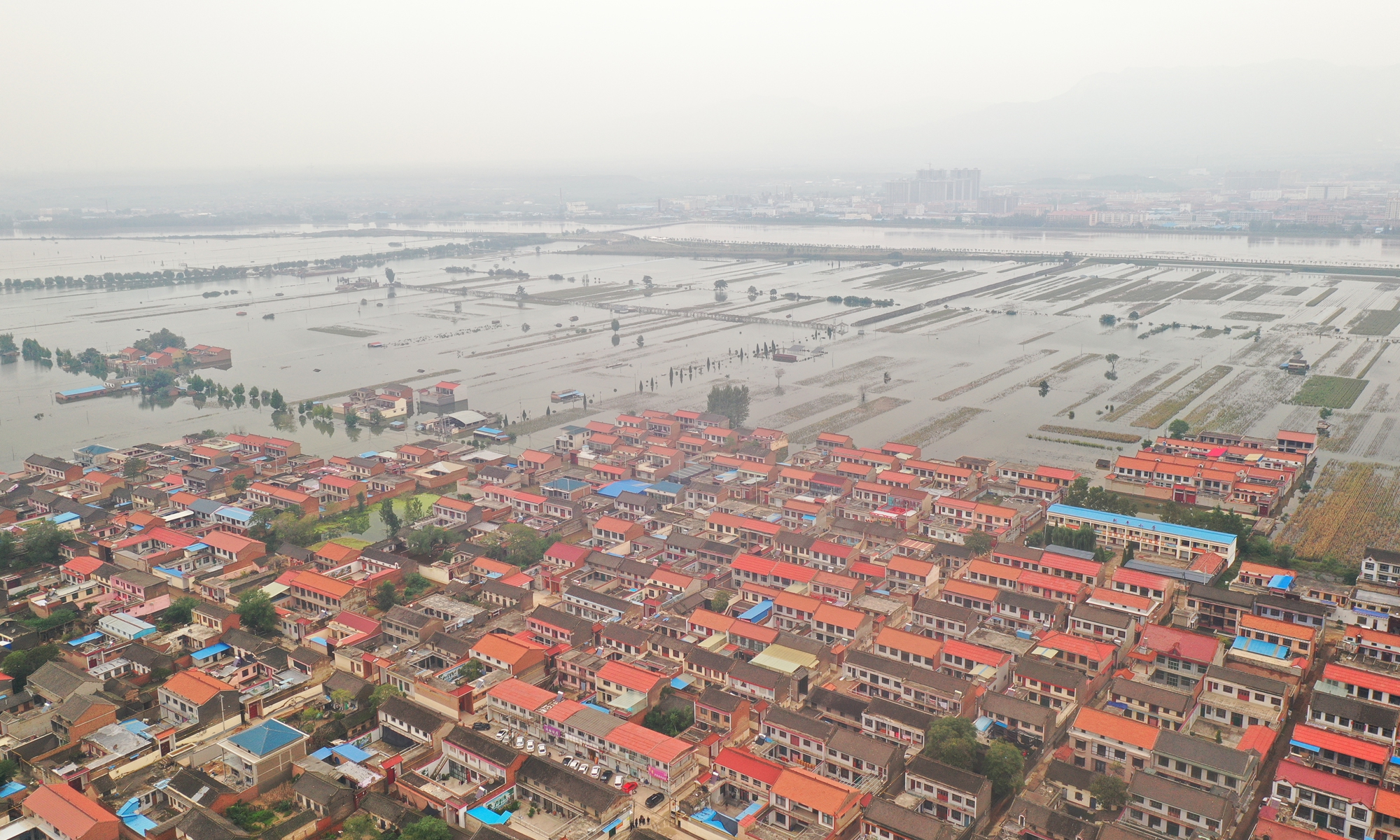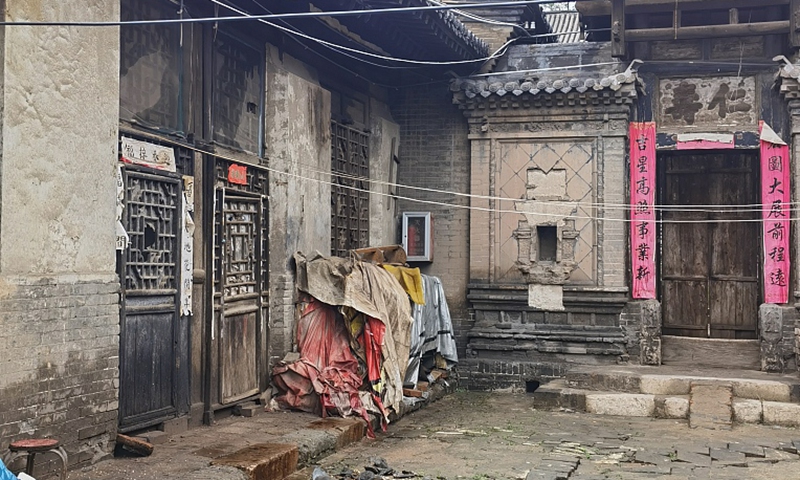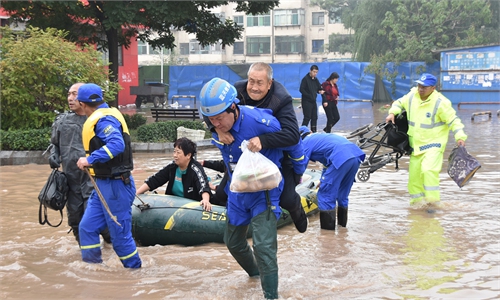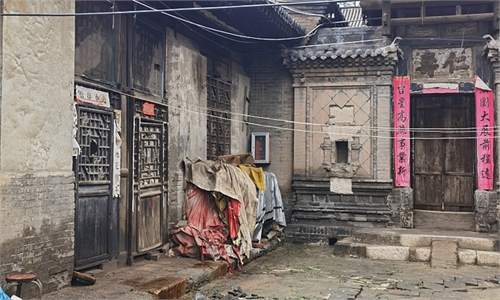Update: Pingyao ancient city in Shanxi finds 51 collapse spots on rammed earth walls after torrential rains kill 15

An aerial photo shows houses are soaked in flood water in the worst-hit village Jingping in Jishan county, North China's Shanxi Province. Photo: VCG
Fifteen people were killed and three were missing as of Tuesday after torrential rains battered North China's Shanxi Province, causing floods and landslides. The impact of the weather on cultural relics in the province gradually emerged, such as the famous Pingyao in Jinzhong city, the nation's best preserved ancient city - which suffered 51 collapsed or damaged spots on its walls.
The heavy rainfall started on October 2 and broke the precipitation record of the province with an average of 119 millimeters, causing 37 rivers to flood, Shanxi authorities said at a Tuesday press conference.
More than 1.75 million people in 76 counties of 11 Shanxi cities have been affected and 120,100 were displaced as of Monday, Shanxi authorities said at the press conference.
Some 23,858 hectares of crops were affected, 19,500 houses collapsed and 18,200 were severely damaged. The direct economic loss has reached 5 billion yuan ($770 million).
In Shanxi, 54 of the 60 coal mines suspended due to heavy rain have resumed production, the Shanxi government said at a press conference on Tuesday. Although the heavy rain caused some coal mines to suspend production temporarily, it would not have a significant impact on coal production in the province, according to the government.
The Global Times learned from frontline rescue teams that the rain has stopped in northern areas and weakened in others, but the flooding continued to have an impact on locals and affected rural areas the most.
The coordination center of Shanxi Blue Sky Rescue Team told the Global Times that since the rain belt moved from the north to the south, the capital city Taiyuan is in a stable situation, while central and southern regions of the province, including Yuncheng and Linfen, are still at the peak of rescue work.
Hao Nan, a frontline rescuer who also participated in the rescue work of Henan floods in July, told the Global Times that this time in Shanxi the affected areas are more extensive but the rainfall was lighter, as was the severity of the inundation.
Thousands of Henan villages were affected but only hundreds in Shanxi, Hao said. However, the water is receding more slowly and the weather already turned cold.
Transportation is difficult and as the water recedes, settlement of the displaced, including food, housing and heating, are posing great challenges, the Global Times learned from Song Haijun, a rescuer currently in Xixian county of Linfen.
Song said that all hotels are being used to settle displaced people in the county and they are in need of coats, blankets and pumps. The most urgent task is to drain the inundated areas as soon as possible before it becomes too cold.

The photo taken on October 7, 2021 shows a building in Pingyao ancient city damaged by floods. Photo: VCG
The downpours have also threatened cultural relics, especially ancient architecture in Shanxi. In addition to the Pingyao ancient city, primary checks found 1,763 relics in Shanxi had collapsed or were damaged due to the rain as of Monday, and the National Cultural Heritage Administration sent experts and allocated funds for local rescue and restoration of the relics. The administration also vowed to enhance follow-up support for the province's relic protection at a working meeting on Monday.Damage to the old structures included collapsed walls, leaking roofs, crevices caused by rainwater saturation and foundation settlement. Most sites that are listed as protected were spared from destruction, but most structures without proper protection were heavily affected, according to the administration.
Tian Lin, a professor at the Beijing University of Civil Engineering and Architecture, told the Global Times that many examples of old architecture in Shanxi are located in villages and lack routine check-up and maintenance. When a deluge comes, they are very vulnerable.
Shanxi increased the cultural heritage protection budget to 167 million yuan in 2020 and the central authorities have special subsidies. But that was insufficient for the province as a "treasure house of ancient Chinese architecture."
The province has innovated a mechanism that allows social capital to "claim" a cultural relic, invest for restoration, and develop it into a tourism site within the requirement of relic protection needs.


